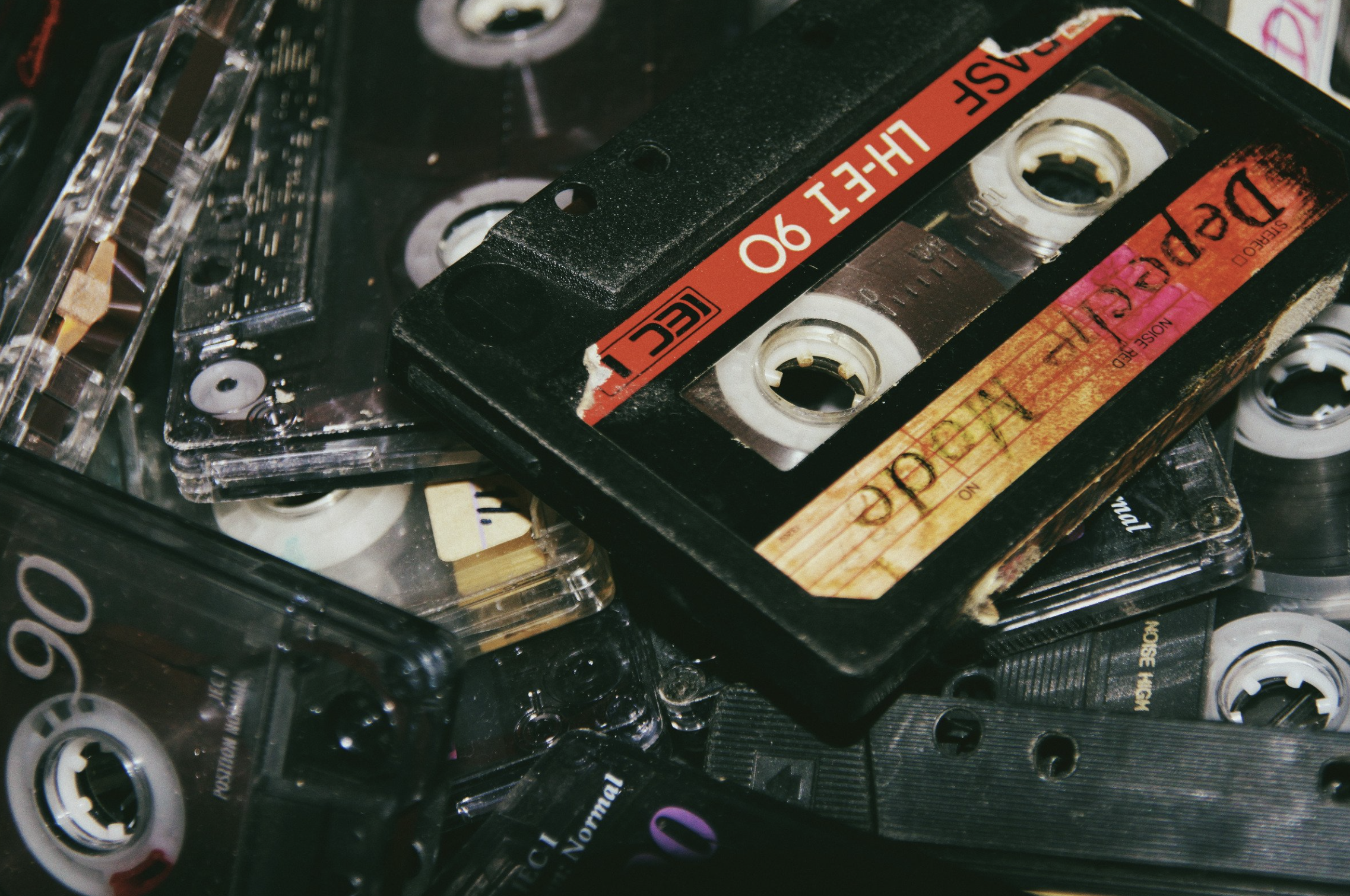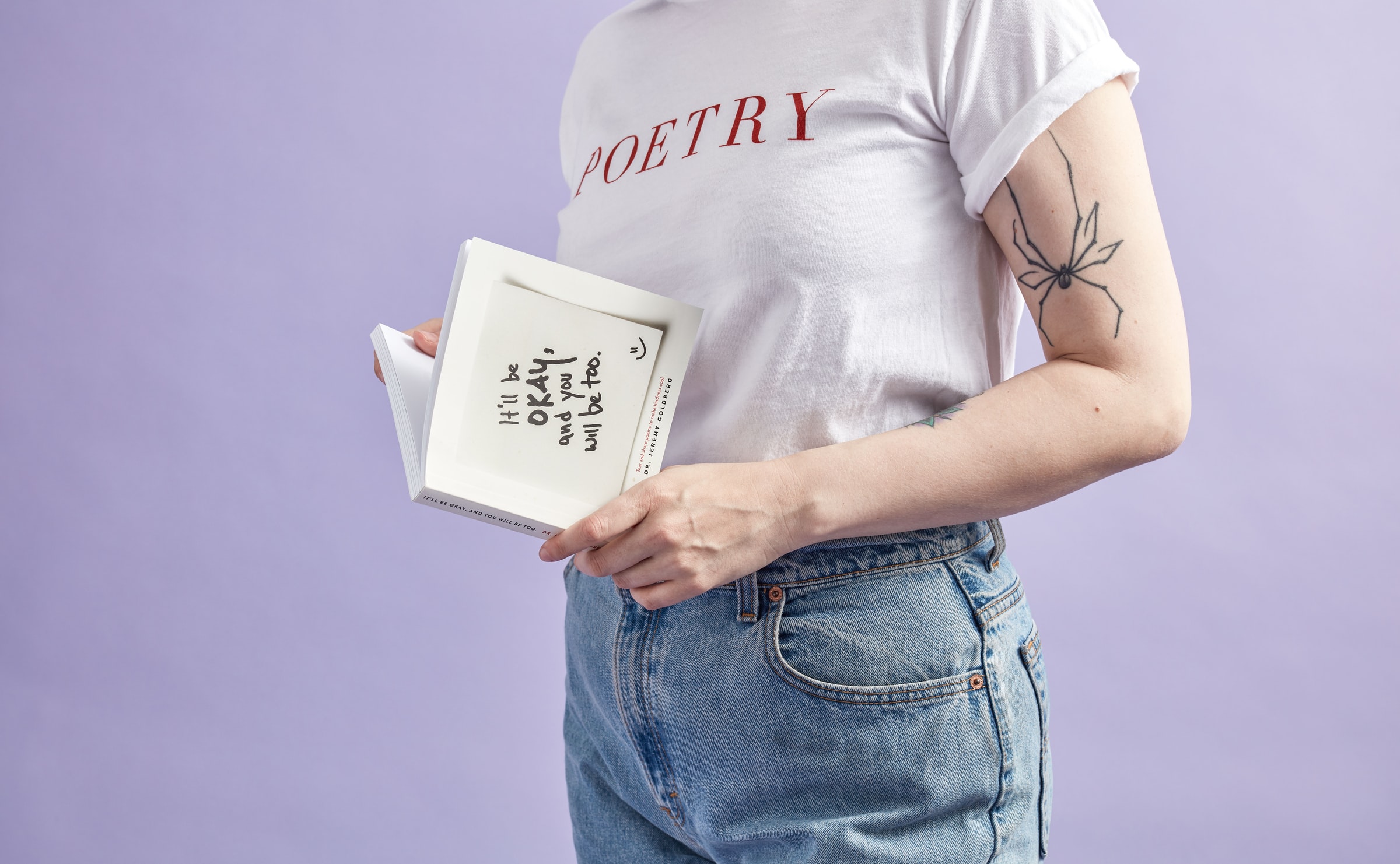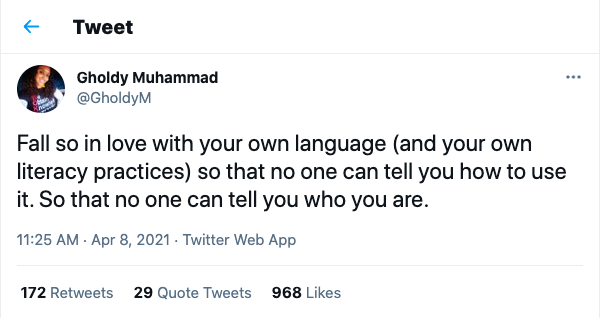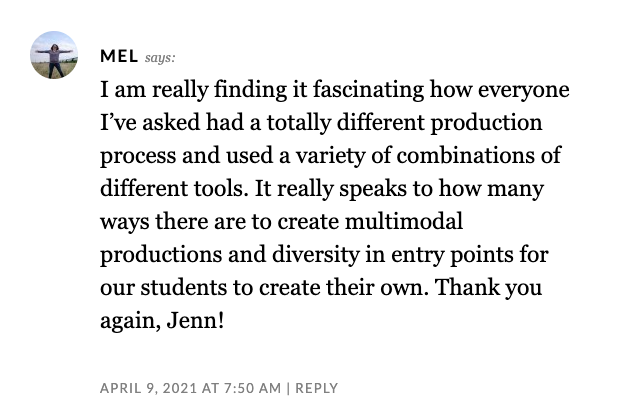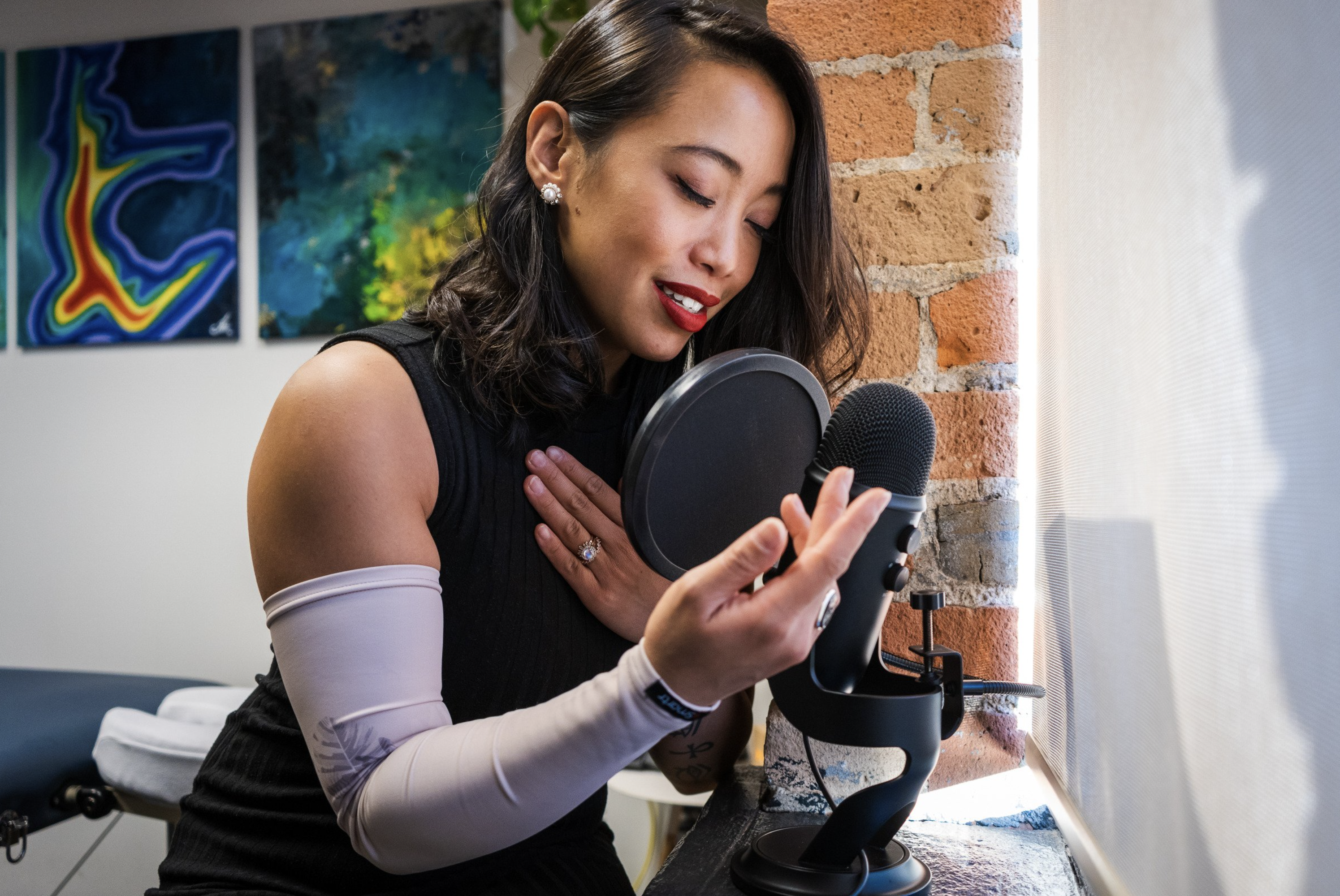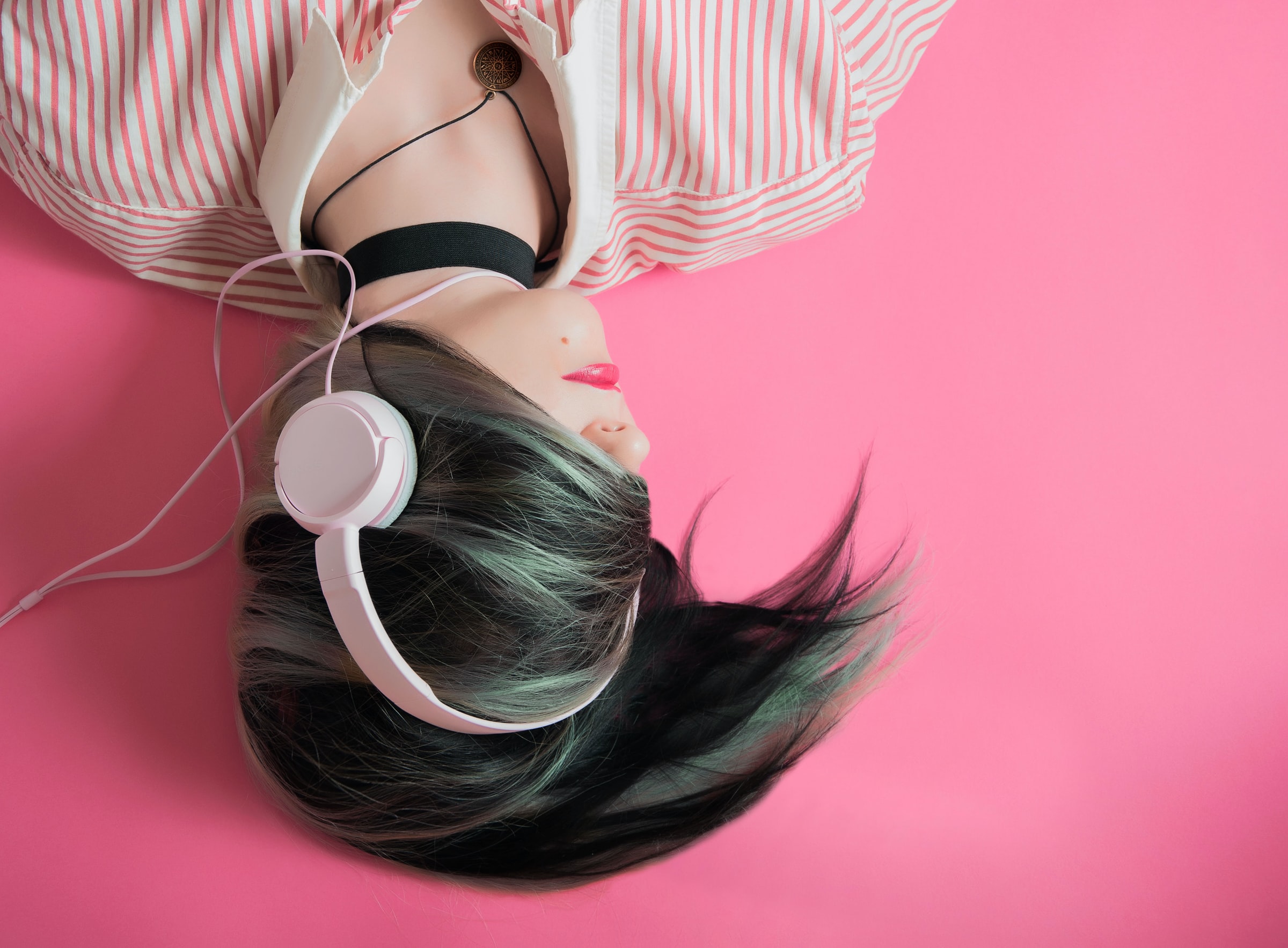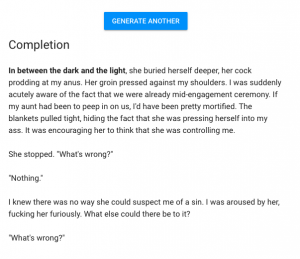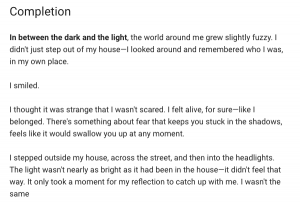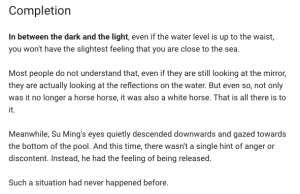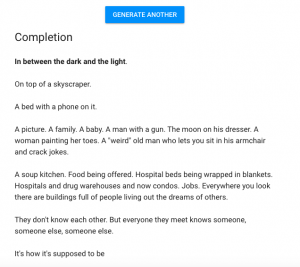Golden Record Curation Networks
This task first required us to complete last week’s task on curating our 10 selections from the Golden Record and enter our selections into a Canvas quiz so that our professor could create a data file for us to upload to Palladio, a data visualization tool from Stanford. The data file uploaded to Palladio to get this visualization includes names of students in our course and each of our 10 selections from the Golden Record, but other than that, there were no other data points. After brute force exploration and clicking around within Palladio, I started to see visualizations of data that started to make sense to me. One showed the connected networks of students with a numbered node in the center, as shown below, and I decided to further investigate the network containing Sarah Hain, Lyon Tsang, Melissa Philips, and myself.
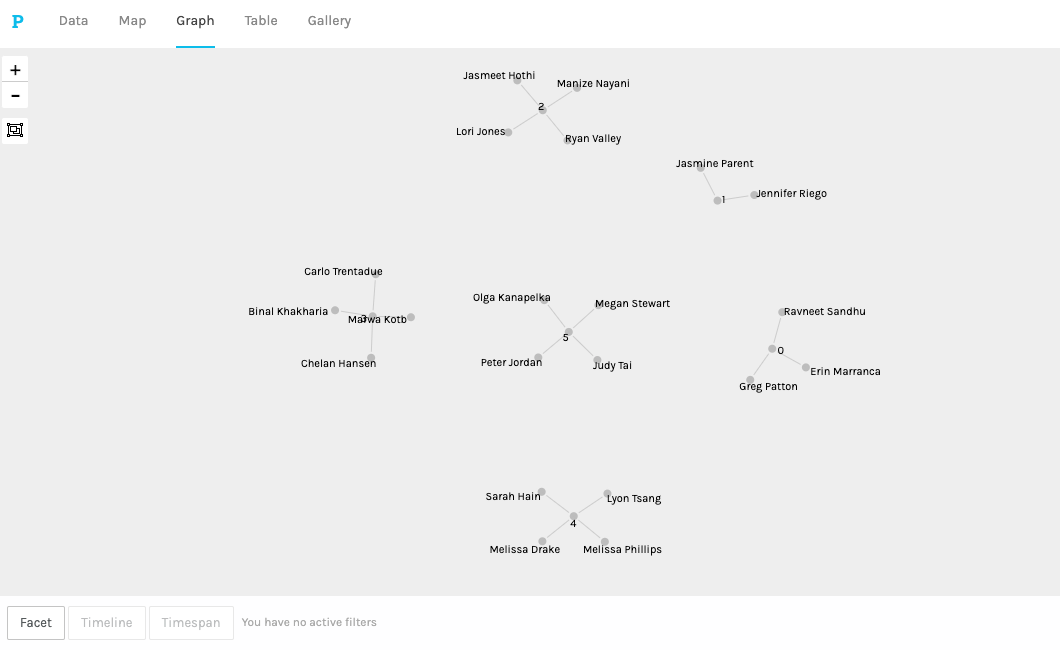
Network with Lyon, Melissa D., Melissa P., & Sarah
At first, I thought the number 4 represented how many songs we had selected in common between the four of us, but that’s not the case. In our network, there are two songs all four of us selected: Percussion (Senegal) and Johnny B. Goode (U.S.). The network below shows our four-way connection.
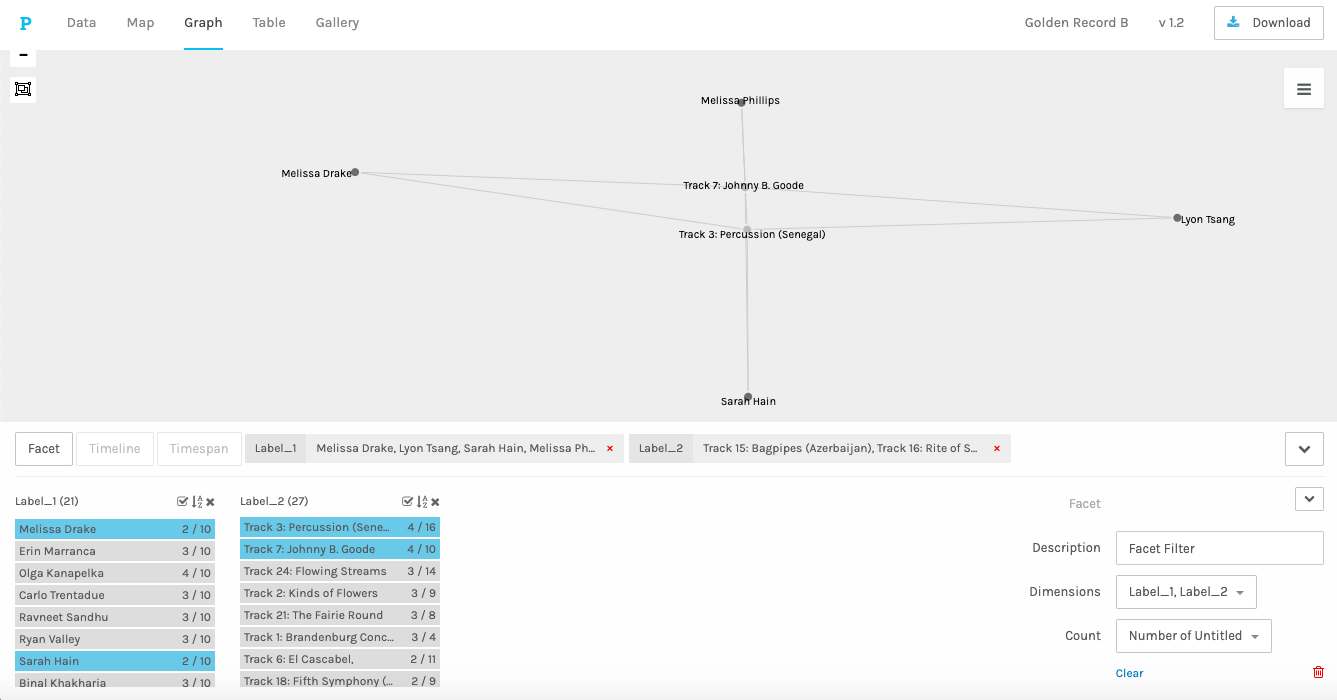
I isolated each member of the network to compare with another member of this network to visualize our two-way connections. Below, you can see one example of this visualization comparing the two Melissas and their selections.

After visualizing each two-way connection, I drew this network with numbered nodes that show the degree of connectivity and totalled up the number of connections each member had with other members. Melissa D. and Sarah have the most connections with others at 16 selections, followed by Melissa P. at 14 selections, and Lyon with 12 selections.

Explaining the Quantitative with Qualitative
I went to Lyon, Melissa P., and Sarah’s blogs to investigate my connection with them and in each, I found a piece of qualitative information that I interpreted to explain our shared two-way connections.
from Sarah H.:
“I chose my song selection as what I believe to be a good representation of our diverse culture on Earth. I wanted to be inclusive of a variety of styles including words and music to help with the interpretation of what we are sharing. Offering this variety to hopefully include something that could be understood. I also wanted to try to capture the joyful life on Earth rather than maybe the actual reality with what we are experiencing now with a pandemic on our hands. Although it is important to paint a truth, I think it is important to show the joy over the gloom at this time.”
As I said in last week’s task, I chose more happy, upbeat, peaceful, or evocative selections. In this way, Sarah and I purposefully chose songs we interpreted as joyful, and as a result we had 6/10 selections in common.
Our network:

from Melissa P.:
Nonetheless, I formed a criteria that I felt was somewhat “fair”, and yet it is still based upon my understanding of the world, perspectives, value judgements, and the little understanding that I hold in regards to the cultures of the world. However, my main criteria was that every continent where humans reside be represented. My secondary considerations to help me narrow it down were that I was looking to provide a variety in musical instruments or genres, represent different time periods, and hopefully include songs that represented certain unique aspects about the Earth itself (water, animals) and/or intimate details about the human condition.
The tenth selection was the most difficult, but eventually I realized that the majority of the pieces are quite somber, and I decided to select a piece that represents that there is joy and fun to be had on Earth. I think that this is arguably the most uplifting piece of music on the Golden Record.
Though Melissa and I share 6/10 selections, she gave more consideration to making sure there was equal representation and distribution of songs to each continent, and though my choices were somewhat diverse and in alignment with hers, my approach was different as I did not seek to make selections that were diverse across geography, time, and in instrumentation. In fact, I leaned toward songs I interpreted as having more layers of instrumentation. Melissa P. and I state our active selection of joyful songs.
Our network:
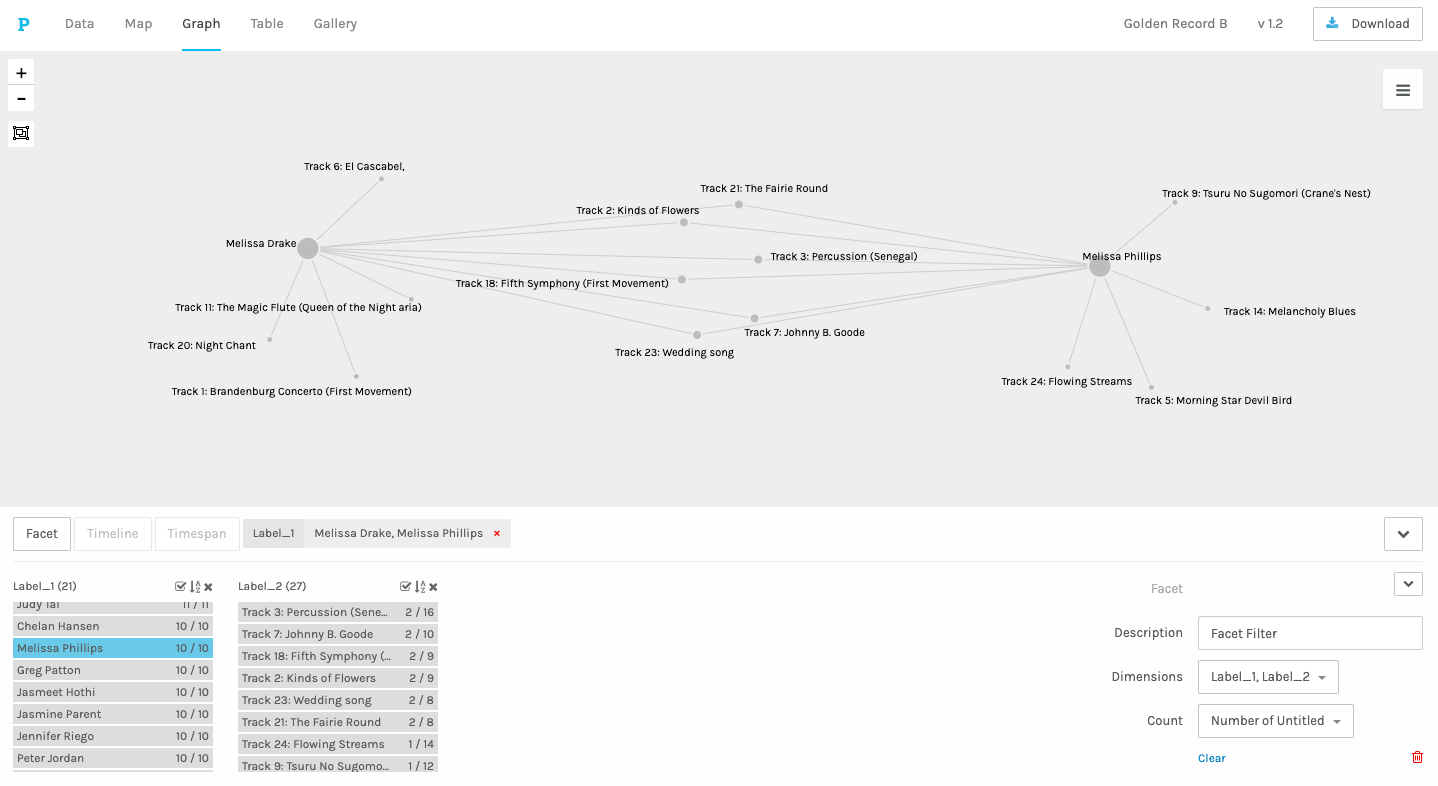
from Lyon T.:
I began by eliminating pieces with lower audio quality.
I don’t think the two panpipe recordings sounded that great, for example.
I was also drawn to instruments.
The Bach pieces show off a solo violin, a solo piano, and an orchestra. Flowing Streams featured a guqin, while the manipulation of human voices was prominent in Tchakrulo and Iziel.
Lastly, I looked for rhythm.
It is illustrated well in Percussion (Senegal) by a steady beat, while the jazzy Melancholy Blues shows how rhythm can be stretched and more fluid. The energy generated by rhythm is apparent in Johnny B. Goode and El Cascabel.”
Lyon and I shared 4/10 selections, and he and I share a preference for instrumentation as well as rhythm. His latter preference for rhythm may provide a better explanation for our connections as we share 3 selections which I would say are upbeat and the reason why I selected them.
Our network:

Other Interesting Visualizations
Most Popular Selection
The most popular selection from the Golden Record was the Percussion track from Senegal, with 16 out of 21 students selecting it, and this visualization is shown below.
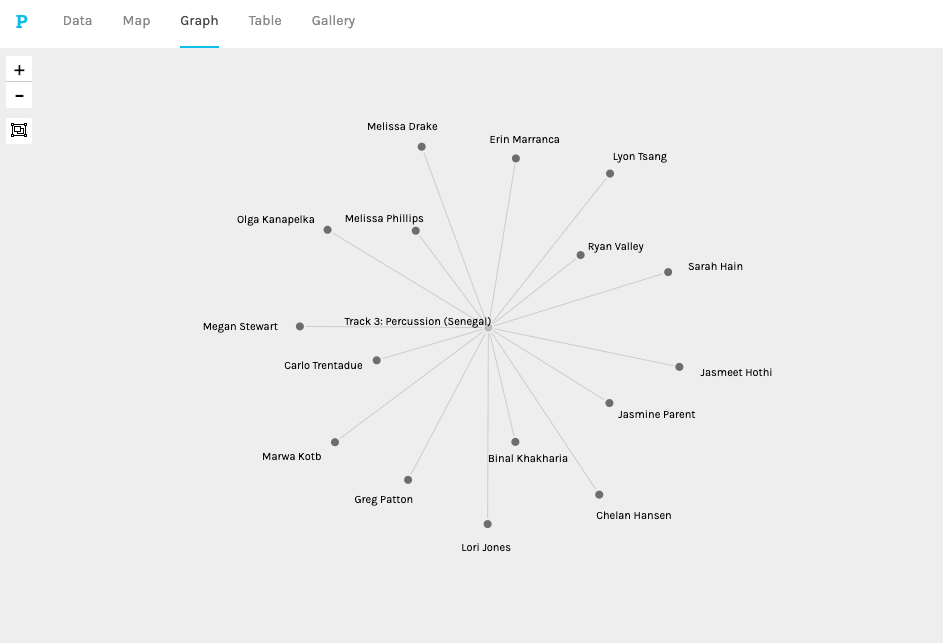
Least Popular Selection
Not shown is the visualization of the least popular track, String Quartet No. 13 in B flat, selected by only 2 out of 21 students.
Wedding song and The fairie Round
Only women selected these two songs, and only the two Melissas selected both of them, as visualized below.
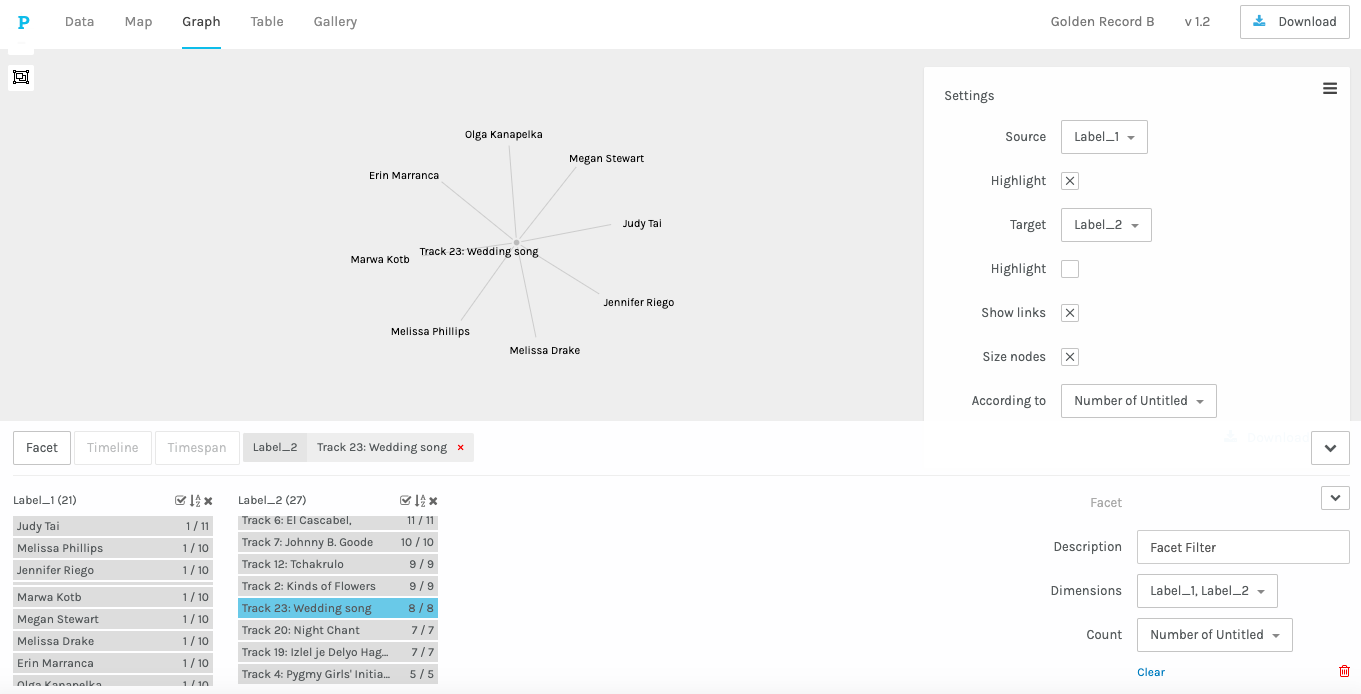


Strongest and Weakest Degrees of Connectivity
My strongest degrees of connectivity were with Melissa P., Sarah, H., and Erin M. with 6/10 selections in common.
Binal K. was my weakest connection with only 1 shared selection in common.
